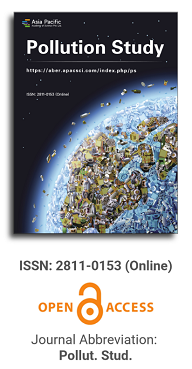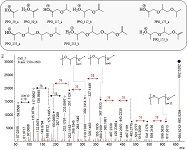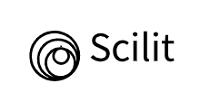
Asia Pacific Academy of Science Pte. Ltd. (APACSCI) specializes in international journal publishing. APACSCI adopts the open access publishing model and provides an important communication bridge for academic groups whose interest fields include engineering, technology, medicine, computer, mathematics, agriculture and forestry, and environment.

The (partial) replacement of synthetic polymers with bioplastics is due to increased production of conventional packaging plastics causing for severe environmental pollution with plastics waste. The bioplastics, however, represent complex mixtures of known and unknown (bio)polymers, fillers, plasticizers, stabilizers, flame retardant, pigments, antioxidants, hydrophobic polymers such as poly(lactic acid), polyethylene, polyesters, glycol, or poly(butylene succinate), and little is known of their chemical safety for both the environment and the human health. Polymerization reactions of bioplastics can produce no intentionally added chemicals to the bulk material, which could be toxic, as well. When polymers are used to food packing, then the latter chemicals could also migrate from the polymer to food. This fact compromises the safety for consumers, as well. The scarce data on chemical safety of bioplastics makes a gap in knowledge of their toxicity to humans and environment. Thus, development of exact analytical protocols for determining chemicals of bioplastics in environmental and food samples as well as packing polymers can only provide warrant for reliable conclusive evidence of their safety for both the human health and the environment. The task is compulsory according to legislation Directives valid to environmental protection, food control, and assessment of the risk to human health. The quantitative and structural determination of analytes is primary research task of analysis of polymers. The methods of mass spectrometry are fruitfully used for these purposes. Methodological development of exact analytical mass spectrometric tools for reliable structural analysis of bioplastics only guarantees their safety, efficacy, and quality to both humans and environment. This study, first, highlights innovative stochastic dynamics equations processing exactly mass spectrometric measurands and, thus, producing exact analyte quantification and 3D molecular and electronic structural analyses. There are determined synthetic polymers such as poly(ethylenglycol), poly(propylene glycol), and polyisoprene as well as biopolymers in bags for foodstuffs made from renewable cellulose and starch, and containing, in total within the 20,416–17,495 chemicals per sample of the composite biopolymers. Advantages of complementary employment in mass spectrometric methods and Fourier transform infrared spectroscopy is highlighted. The study utilizes ultra-high resolution electrospray ionization mass spectrometric and Fourier transform infrared spectroscopic data on biodegradable plastics bags for foodstuffs; high accuracy quantum chemical static methods, molecular dynamics; and chemometrics. There is achieved method performance |r| = 0.99981 determining poly(propylene glycol) in bag for foodstuff containing 20,416 species and using stochastic dynamics mass spectrometric formulas. The results highlight their great capability and applicability to the analytical science as well as relevance to both the fundamental research and to the industry.
Assessing water quality in the Godavari River, Nashik: A study on specific gravity and surface tension variations
Vol 6, Issue 2, 2025
Download PDF
Abstract
The Godavari River flows year-round, being a perennial watercourse, providing a steady water supply. However, rising pollution threatens its water quality. Without regular pollution control, it may face a decline similar to the River Nandini, which vanished in the 1940s along with its surrounding forest. Thus, this study investigated the specific gravity and surface tension of various water samples collected near the Victoria Bridge on the Godavari River to assess the impact of different contaminants. Samples analyzed include pure water, polluted water, saline water, water with detergent, slightly muddy water, and slightly ashy water, which might contain gold particles or gold dust in it. The findings reveal that saline water exhibited the highest specific gravity (1.025 g/cm3), while pure water maintained a specific gravity of 1.000 g/cm3. At point 1, the surface tension ranged from 31 to 42 mN/m. For point 2, it fell between 49 and 55 mN/m. Point 3 showed a range of 49 to 60 mN/m, while at point 4, it varied from 49 to 57 mN/m. Lastly, point 5 exhibited surface tension values between 49 and 56 mN/m at Victoria Bridge. Surface tension measurements ranged from 55 to 70 mN/m at all five points—point 1 through point 5 each displayed values within this consistent interval at Tapovan Bridge and a point near Dasak Bridge. Thus, surface tension measurements indicated that contaminants such as detergents and organic pollutants significantly reduce water’s surface tension, affecting the transport and fate of pollutants. The average suspended particle mass (mg) was found to be about 13.4 (mg). These results emphasize the importance of continuous monitoring and remediation efforts to maintain water quality, especially under extreme climatic conditions.
Keywords
References
1. Naithani R, Pande, I.P. Comparative analysis of the trends in river water quality parameters: A case study of the Yamuna River. International Journal of Scientific Research Engineering & Technology (IJSRET). 2015; 4(12): 1212–1221.
2. Chatterjee B. 62 crore in India endured severe heatwave in June, highest globally: Analysis. Hindustan Times. Available online: https://www.hindustantimes.com/environment/62-crore-in-india-endured-severe-heatwave-in-june-highest-globally-analysis-101719512011255.html (accessed on 2 February 2025).
3. Environment News Futures. Asian Journal of Water, Environment and Pollution. 2024; 21(4): 113-115. doi: 10.3233/ajw240052
4. Basic Information about Source Water Protection | US EPA. (2025, February 3). US EPA. Available online: https://www.epa.gov/sourcewaterprotection/basic-information-about-source-water-protection (accessed on 2 February 2025).
5. Kuvarsing Rajput PG, Chavan et al. Water quality assessment of Godavari River, Nashik City. International Journal of Advanced Research in Science Communication and Technology. 2024; 4(2): 518–521. doi: 10.48175/568.
6. V. M. BALSARAF AND G.B. KUNDE. (2008). Physico–Chemical Studies of Pollutant in Waste Water of Nashik Express Highway, Thane Region. Jr. Of Industrial Pollution Control. 2008; 24(2): 183-185, 183–186.
7. What is groundwater. USGS. Available online: https://www.usgs.gov/faqs/what-groundwater? (accessed on 2 February2025).
8. Understanding source water and why it needs protection. Department of Environmental Conservation. Available online: https://dec.ny.gov/environmental-protection/water/water-quality/understanding-source-water? (accessed on 26 Feburary-2025).
9. Kharake AC, Raut VS. An assessment of water quality index of Godavari river water in Nashik city, Maharashtra. Applied Water Science. 2021; 11(6). doi: 10.1007/s13201-021-01432-2
10. Kumari P, Jangra MS. Status of River Water in India: A Review. International Journal of Environment and Climate Change. 2023; 13(11): 2049-2059. doi: 10.9734/ijecc/2023/v13i113365
11. Current Scenario Of Water Quality Status Of Indrayani River At Pune District, Maharashtra. International Journal of Creative Research Thoughts (IJCRT). Available online: https://www.ijcrt.org/papers/IJCRT2310199.pdf (accessed on 2 February 2025).
12. Patil MB, Maurya Kajal K, Nagapure Gayatri D, et al. Assessment of river water quality by using Water Quality Index at Sahdev Nagar, Nashik, Maharashtra 422003. Available online: https://ilkogretim-online.org/index.php/pub/article/view/7812 (accessed on 2 February 2025).
13. Roy S, Singh WS, Manna K, et al. Assessing and modelling drinking water quality at the railway stations of Tripura, India, with a possible strategic solution. Arabian Journal of Geosciences. 2023; 16(2). doi: 10.1007/s12517-022-11130-1
14. World Health Organization: WHO. Drinking-water. Available online: https://www.who.int/news-room/fact-sheets/detail/drinking-water (accessed on 19 February 2025).
15. Wongniramaikul W, Kleangklao B, Boonkanon C, et al. Portable Colorimetric Hydrogel Test Kits and On-Mobile Digital Image Colorimetry for On-Site Determination of Nutrients in Water. Molecules. 2022; 27(21): 7287. doi: 10.3390/molecules27217287
16. Photo archived: Nashik: The 127-year-old Victoria Bridge is still standing. Marathi News Esakal. Available online: https://www.esakal.com/image-story/nashik-victoria-ahilyadevi-holkar-bridge-becomes-127-year-old-ppj97 (accessed on 2 February 2025).
17. Photo archived. Clouds of water cut on Nashik! Only 34 percent water storage in Gangapur dam. Marathi News Esakal. Available online: https://www.esakal.com/uttar-maharashtra/nashik/nashik-mayor-satish-kulkarni-announced-that-water-supply-reduce-in-city (accessed on 2 February 2025).
18. Photo archived: Gangapur Dam Nashik. Available online: https://images.app.goo.gl/XhDXhx2wqPDhn5Hb9 (accessed on 2 March 2025).
19. Kolhe B, S. P. Zambare SPZ, S. B. Andhale SBA. Assessment of Physico-Chemical Water Parameters Using Correlation Analysis: A Case Study of Gangapur Dam at Nashik District (M.s.) India. Indian Journal of Applied Research. 2011; 4(3): 509-511. doi: 10.15373/2249555x/mar2014/159
20. Chakraborty M, Tejankar A, Coppola G, et al. Assessment of groundwater quality using statistical methods: a case study. Arabian Journal of Geosciences. 2022; 15(12). doi: 10.1007/s12517-022-10276-2
21. Bharati GK, Satish MS. Study of Some Physico-Chemical Parameters of Godavari River Water at Ramkund, Nashik With Reference to Correlation Study. Paripex - Indian Journal Of Research. 2012; 3(5): 1-3. doi: 10.15373/22501991/may2014/82
22. Gawande R, Pathak P. Prioritizing tributary care for comprehensive river pollution management and sustainable urban development: A case study of Nandini. In: Nia HA, Rahbarianyazd R. (editors). Innovative Approaches to Cultural Heritage and Sustainable Urban Development: Integrating Tradition and Modernity. Cinius Yayınları. 2024.
23. Bowes M., Sinha R., Joshi H, et al. River water quality monitoring. Available online: https://www.ceh.ac.uk/sites/default/files/2021-11/sustainable-water-guide-chap5-river-water-quality-v2.pdf (accessed on 2 February 2025).
24. Dhande BS, Narkhede RS. Evaluating Nandini River Water Quality: A Systematic Review Of Physicochemical Studies. International Journal of Membrane Science and Technology. 2023; 10(2): 3910-3917. doi: 10.15379/ijmst.v10i2.3262
25. Kathe S, Tidake S, Maniyar H, et al. Water quality assessment of Nandini River (Nasardi). International Research Journal of Engineering and Technology (IRJET). 2019; 6(3): 7867–7872.
26. Pawar T. NMC to submit report on efforts to tackle river pollution. The Times of India. 2020.
27. Water and Wastewater. Water Conservation: Essential Strategies for Sustainable Living-Water & Wastewater. Water and Wastewater. Available online: https://www.waterandwastewater.com/water-conservation-essential-strategies-for-sustainable-living/ (accessed on 6 February 2025).
28. Patil CA, Nalawade PM, Gadakh BL, et al. Statistical assessment of groundwater quality using hydrochemical parameters for drinking water of rural areas in Nashik district, Maharashtra, India. Water Science. 2022; 36(1): 136-143. doi: 10.1080/23570008.2022.2152175
29. Manjusha B, Prakash K, Abhijit B, et al. Water quality assessment of the River Godavari, at Ramkund, Nashik, (Maharashtra), India. Research Inventy: International Journal of Engineering and Science. 2013; 2(2): 64–68.
30. Bawa Kalpana V, Gaikawad VB. Water quality assessment of Godavari River at Nashik, India: Impact of sewage and industrial wastewater. Universal Journal of Environmental Research and Technology. 2013; 3(4): 452–457.
31. Patil CA, Nalawade PM, Gadakh BL, et al. Spatio-Temporal varation Within in pH and TDS in groundwater using Statistics and GIS in Nashik District, Maharashtra India. Journal of Drug Delivery and Therapeutics. 2022; 12(5S):168-173.
32. World Health Organization. Guidelines for drinking-water quality, 4th edition. Available online: https://www.who.int/publications-detail-redirect/9789241548151 (accessed on 5 February 2025).
33. National Primary Drinking Water Regulations | EPA. Available online: https://www.epa.gov/ground-water-and-drinking-water/national-primary-drinking-water-regulations (accessed on 2 February 2025).
34. U.S. Environmental Protection Agency. Drinking Water Regulations and Contaminants. Available online: https://www.epa.gov/sdwa/drinking-water-regulations-and-contaminants (accessed on 5 February 2025).
35. Bhandare SD, Niphade Srushti S, Pagar Pranali A. A comparative evaluation and market analysis report of the prepared herbal shampoo a market essential. European Journal of Biomedical AND Pharmaceutical Sciences. 2023; 10(12): 138-168.
Supporting Agencies
Copyright (c) 2025 Author(s)
License URL: https://creativecommons.org/licenses/by/4.0/

This site is licensed under a Creative Commons Attribution 4.0 International License (CC BY 4.0).
.jpg)
Beijing University of Technology, China



